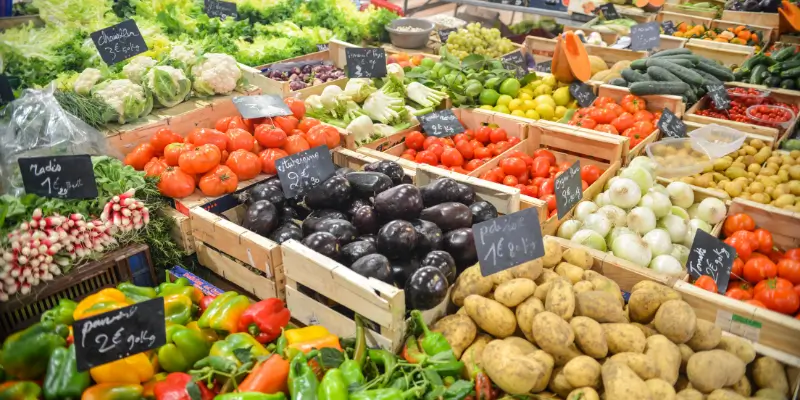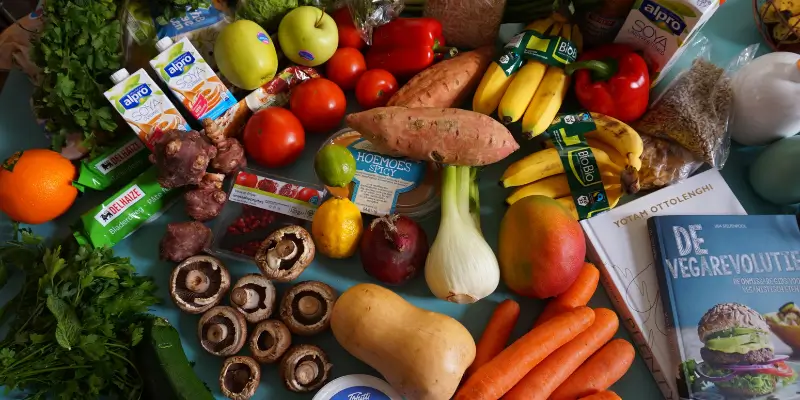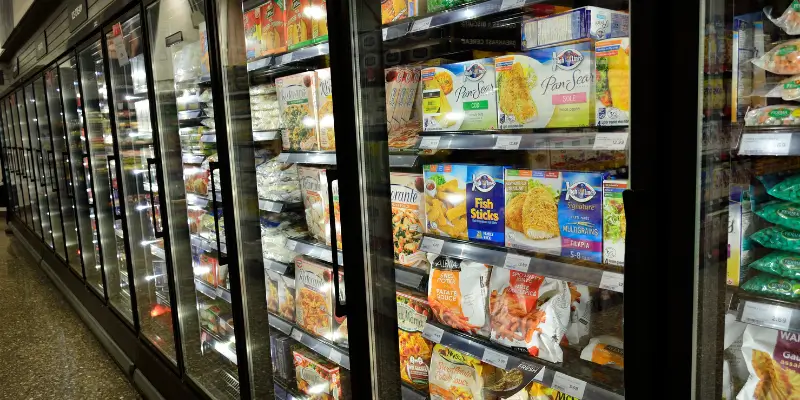
Introduction to the average cost of groceries per month
Are you asking? What is the average cost of groceries per month? As a responsible adult, it is essential to keep track of your monthly expenses, and one of the significant costs that can quickly add up is your grocery bill. Understanding the average cost of groceries per month can provide valuable insights into your budgeting and financial planning.
In this comprehensive guide, we will delve into various factors that affect the average cost of groceries per month, how much a single person should spend on groceries a month, whether $200 is enough for groceries, the projected average grocery bill in 2024, and whether $300 a month for groceries is considered high. By the end of this article, you will have a clear understanding of how to manage your grocery expenses effectively.
Factors that affect the average cost of groceries per month
Several factors come into play when determining the average cost of groceries per month. The primary factor is the number of individuals in your household. A single person will typically spend less on groceries compared to a family of four. Other factors include your location, dietary preferences, and lifestyle choices.
Different regions have varying costs of living, which directly affects grocery prices. Additionally, if you follow a specific diet, such as a vegan or gluten-free diet, you may incur higher costs due to specialized products. Lastly, your lifestyle choices, such as buying organic or gourmet items, can significantly impact your grocery expenses.
How much should a single person spend on groceries a month?
Determining how much a single person should spend on groceries per month can be challenging as it depends on various factors. However, a general guideline is to allocate around 10-15% of your monthly income to groceries. For example, if you earn $2,000 a month, you should aim to spend $200-$300 on groceries. This estimate includes both essential items and occasional treats.
It is crucial to create a budget and stick to it to ensure you are not overspending or compromising on the quality of your meals. By planning your meals in advance and making a shopping list, you can effectively manage your grocery expenses and avoid unnecessary purchases.
Is $200 a month enough for groceries?
The question of whether $200 a month is enough for groceries depends on your personal circumstances and lifestyle. While it is possible to meet your basic nutritional needs within this budget, it may require careful planning and budgeting.
To make the most of a $200 grocery budget, consider buying staple items in bulk, opting for generic brands instead of name brands, and utilizing discounts and coupons. Additionally, focus on purchasing fresh produce when it is in season, as it tends to be more affordable. By adopting these money-saving strategies, you can stretch your $200 budget and still enjoy a variety of nutritious meals.
More Reading: How to live on 1000 a month
What is the average grocery bill in 2024?
Predicting the exact average grocery bill in 2024 is challenging due to various economic factors and market fluctuations. However, it is reasonable to expect a gradual increase in grocery prices due to inflation and other factors. According to industry projections, the average grocery bill is expected to rise by approximately 2-3% annually.
Therefore, it is important to stay informed about market trends and adjust your budget accordingly. By regularly reviewing your grocery expenses and making necessary adjustments, you can stay ahead of price increases and ensure your budget remains realistic and manageable.
Is $300 a month for groceries a lot?

The question of whether $300 a month for groceries is considered a lot depends on your personal circumstances, income level, and lifestyle choices. For some individuals or families, $300 may be a reasonable budget, allowing for a variety of food choices and occasional indulgences.
However, for others with stricter budget constraints, $300 may be a significant expense. It is essential to evaluate your overall financial situation and determine whether $300 is a feasible amount for your groceries. If you find it challenging to stick to this budget, consider implementing money-saving strategies such as meal planning, buying in bulk, and minimizing food waste.
How to budget when you have Teenagers
When budgeting for groceries with teenagers, it’s important to consider their appetites and preferences. Teenagers often have higher caloric needs and may require more expensive food items. To manage costs, involve your teenagers in the budgeting process and encourage them to make mindful choices. Additionally, consider meal planning and batch cooking to minimize waste and ensure you have enough food to satisfy their hunger.
Tips for saving money on groceries
- Meal planning and budgeting for groceries: Plan your meals for the week before going grocery shopping. This helps you create a precise shopping list and avoid impulse purchases. Set a budget and aim to stick to it.
- Shop smart and find the best deals: Compare prices between different stores and take advantage of sales and discounts. Consider joining loyalty programs or using cashback apps to save even more.
- Utilize grocery shopping apps and tools: Many apps offer digital coupons, price comparisons, and personalized recommendations. Use these tools to find the best deals and track your expenses.
- Buy in bulk: Bulk purchasing can often lead to significant savings. Consider buying non-perishable items, such as rice, pasta, and canned goods, in larger quantities to save money in the long run.
- Consider store brands and generic products: Generic brands often offer similar quality to name brands at a lower cost. Experiment with different brands to find ones that meet your expectations.
- Shop online: Shopping online can save you money. When shopping online, take advantage of special promotions or reduced prices on perishable goods. This strategy can be particularly effective in saving money on items that are nearing their expiration dates.
- Shopping Trips: By timing your shopping trips strategically, you can increase your chances of finding great deals on fresh produce, dairy products, and other perishable items.
Furthermore, don’t be afraid to venture beyond the familiar territory of name brands and explore the world of store brands or generic products. Many times, these alternatives can be just as good as their more expensive counterparts, offering comparable quality at a lower cost. By giving store brands a chance, you might discover hidden gems that not only save you money but also meet your expectations in terms of taste and quality.
By being mindful of these tips and incorporating them into your grocery shopping routine, you can maximize your savings and get the most value out of every trip to the store. Remember, saving money doesn’t mean compromising on quality or taste. With a little bit of planning and exploration, you can find incredible bargains that allow you to stretch your budget without sacrificing the enjoyment of delicious and nutritious meals. Happy shopping!
By implementing these money-saving tips, you can significantly reduce your grocery expenses and make the most of your budget.
Look for Bargains, Lower your average cost of groceries per month

When looking for bargains at the grocery store, it’s important to keep a few tips in mind. First and foremost, make sure to thoroughly check the weekly circulars and flyers for any sales or discounts on items you regularly purchase. These promotional materials often contain valuable information about the latest deals and offers available at the store. By staying informed about these sales, you can plan your shopping trips accordingly and take advantage of the best bargains.
In addition to checking the circulars, consider shopping during off-peak hours when the store may have clearance items or reduced prices on perishable goods. This strategy can be particularly effective in saving money on items that are nearing their expiration dates. By timing your shopping trips strategically, you can increase your chances of finding great deals on fresh produce, dairy products, and other perishable items.
Furthermore, don’t be afraid to venture beyond the familiar territory of name brands and explore the world of store brands or generic products. Many times, these alternatives can be just as good as their more expensive counterparts, offering comparable quality at a lower cost. By giving store brands a chance, you might discover hidden gems that not only save you money but also meet your expectations in terms of taste and quality.
By being mindful of these tips and incorporating them into your grocery shopping routine, you can maximize your savings and get the most value out of every trip to the store. Remember, saving money doesn’t mean compromising on quality or taste. With a little bit of planning and exploration, you can find incredible bargains that allow you to stretch your budget without sacrificing the enjoyment of delicious and nutritious meals. Happy shopping!
More Reading: Cash Stuffing Method
Conclusion: Average Cost of Groceries per month

Understanding the average cost of groceries per month is crucial for effective budgeting and financial planning. Factors such as household size, location, dietary preferences, and lifestyle choices play a significant role in determining your grocery expenses. While there is no one-size-fits-all answer to how much you should spend on groceries, it is essential to create a budget that aligns with your income and financial goals.
By implementing money-saving strategies, such as meal planning, shopping smart, and utilizing grocery shopping apps, you can stretch your budget and make the most of your grocery shopping experience. Remember, regular evaluation and adjustments to your budget are essential to stay on track and ensure your grocery expenses remain manageable.